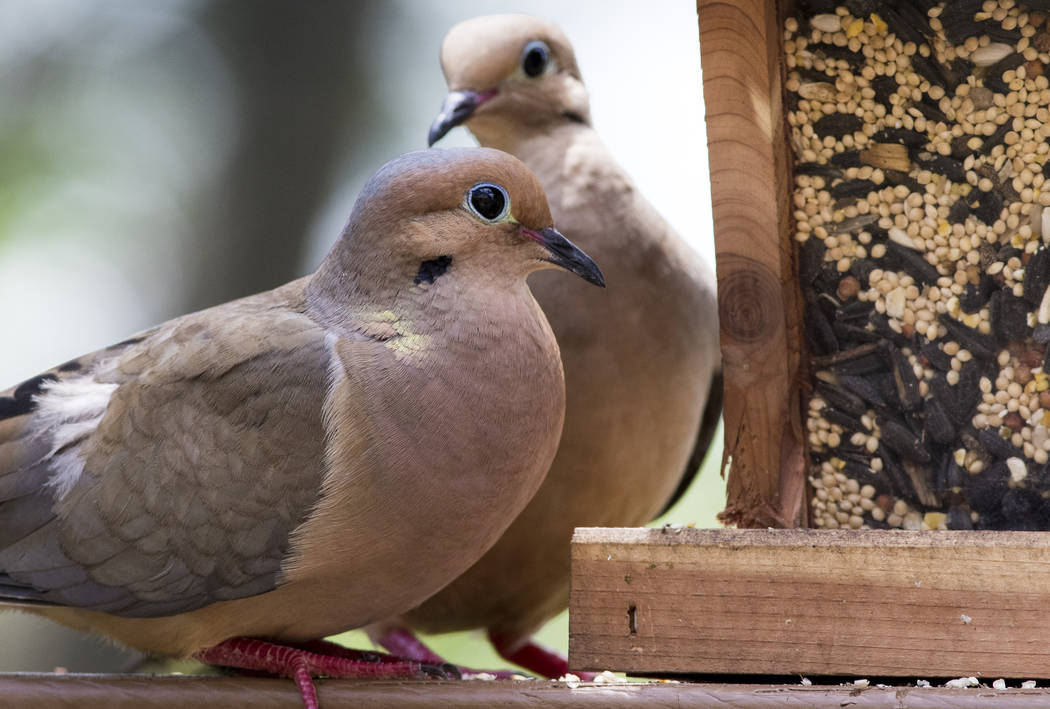Dove hunters need to check local rules before shooting

Though Nevada’s big-game hunting seasons already have begun, it’s opening day of the annual mourning dove season that has long been viewed by hunters as the “official” beginning of the hunting season. And probably for just as long, that opener has taken place on Sept. 1.
Such is the case for the 2019 season, which gets underway a week from Sunday.
According to the U.S. Fish and Wildlife Service, there were about 249 million doves in the country when the season began in 2018, making mourning doves “one of the most abundant bird species in North America.” They also are one of the most popular game birds.
Data gathered through the Harvest Information Program shows that approximately 694,000 hunters harvested 10.3 million doves nationwide while spending 1.7 million days afield during the 2018 dove hunting season. Here in Nevada, 2,700 hunters bagged about 21,400 birds during the two-month season.
Next door in California, hunters put almost 893,000 doves on ice while spending 129,400 days in the field. High bird numbers and agricultural areas that welcome hunters make the Golden State a popular destination for dove hunters from the Southern Nevada area. The communities of Blythe, California, and nearby Yuma, Arizona, are hunter-friendly and have a reputation for making hunters feel welcome.
Keep in mind that California law mandates the “use of nonlead ammunition when taking any wildlife with a firearm” within its borders. Ammunition approved by the Fish and Wildlife Service as nontoxic meets that requirement. A list of ammunition certified by the California Department of Fish Game as meeting the non-lead requirement can be found online at wildlife.ca.gov/Hunting/Nonlead-Ammunition/Certified.
Traditional lead ammunition remains legal on most Nevada public land managed by the Bureau of Land Management, but it is prohibited in national wildlife refuges and state wildlife management areas. No matter where you plan on hunting, it always pays to check the ammunition requirements before going afield. This is especially true anytime you plan to hunt someplace new. Keep in mind that rules can change between hunting seasons.
Before Southern Nevada became a homebuilder’s paradise, there were several places where hunters could pursue doves here in the Las Vegas Valley. But as development pushed agricultural operations into the history books, hunters have had to find locations outside of the valley and even adopt new hunting methods.
There are agricultural areas in the Moapa, Virgin, Pahranagat and Amargosa valleys. You might also find opportunity near Panaca or Pioche, but you will need permission to hunt on private property. Trespassing is taken seriously in the Silver State, but knocking on the door at 4 a.m. on opening day to ask for permission is not recommended. In fact, doing something like that will do more to harm hunter-landowner relations than it will help.
If you would like to hunt private land, seek permission well before opening day.
Other places that offer public hunting opportunities include the Pahranagat National Wildlife Refuge and the Ash Meadows National Wildlife Refuge and the Kirch, Key Pittman and Overton wildlife management areas.
In much of the West, the traditional method of hunting doves involves finding a place for a stand, usually along the edge of a cultivated field or a flight path to a water source. The hunter arrives before sun-up or late in the afternoon and settles to await the arrival of birds. They will fly at both times.
Don’t become discouraged if you have trouble finding a stand near an agricultural operation. You can find doves near natural springs and man-made water developments in the desert. An old stock tank can be very productive. This is especially true in the days following a summer storm. As a rule, the Southern Nevada area gets hit with a monsoon in the days leading up to the dove opener. Even a puddle can attract doves, though you will want to look for something near a roost area or food source.
Full camouflage isn’t required when hunting doves, but drab clothing of some kind is recommended. Think of earth tones that can help you blend in with the habitat you plan to hunt. Your favorite shotgun will work but don’t be afraid to open up the choke by going to modified or improved cylinder. Doing so will give you a wider shot pattern.
Freelance writer Doug Nielsen is a conservation educator for the Nevada Department of Wildlife. His “In the Outdoors” column, published Thursday, is not affiliated with or endorsed by the NDOW. Any opinions he states in his column are his own. Find him on Facebook at @dougwritesoutdoors. He can be reached at intheoutdoorslv@gmail.com